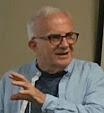In Zimbabwe, Shona mothers sing a traditional lullaby, “Chitsidzo”, to their babies. While looking into her child's eyes, the mother has the sensation that the baby is older than she.
[1]
Bundled in bloody afterbirth
he came to us
a wet escapee
from the fluid flowing sodden belly shelter Mary.
Had he known before
before he took flesh
had he known this world
this womb
this lovely shimmering perplexing
world womb before?
Or did his eyes open that night
for the first time,
for the first time deep within
this enigmatic grotto of our universe?
heavy moist sharp air
vex soothe arouse his new raw skin
nostrils throat and lungs?
Did sounds stirring
first sounds
distinct, separate, clear sounds
moaning clucking hissing
rustling sounds
confuse frighten fascinate
his beginner’s ear?
Did new light
torch light star light
light of moon and lantern on lucent mother’s face
soft light of late night color
beguile enthrall bewitch
his seeing?
When for the first time he inhaled
the breath of night
did odors of beasts
straw wool fire
startle or please him?
[2]
By what means or mysteries
by what high ways or low ways
through what empyrean canals
do our children come to us?
Do they follow stars to find us?
Do faint remembrances resonate
within them?
Do they bear memories of dwellings
we know no longer of?
Do the angels sing their births?
Does earth tremble
before each child begins to cry?
[3]
Road-worn exhausted Mary
herself a stranger
made strange by the world
made strange by whims and winds of circumstance
made more strange by this birth
Mary took this child of blessing to her breast
felt the milk of life flow forth from her
and was content.
Content
and with wonder Mary caressed wee fingers
fingered damp midnight hair
brushed tiny cheeks
gazed into dark probing eyes
that searched her eyes
and knew already her heart.
© Budd Friend-Jones
December 28, 2018
(Photo collected by Ashley Harris on Pinterest)
©Budd Friend-Jones















